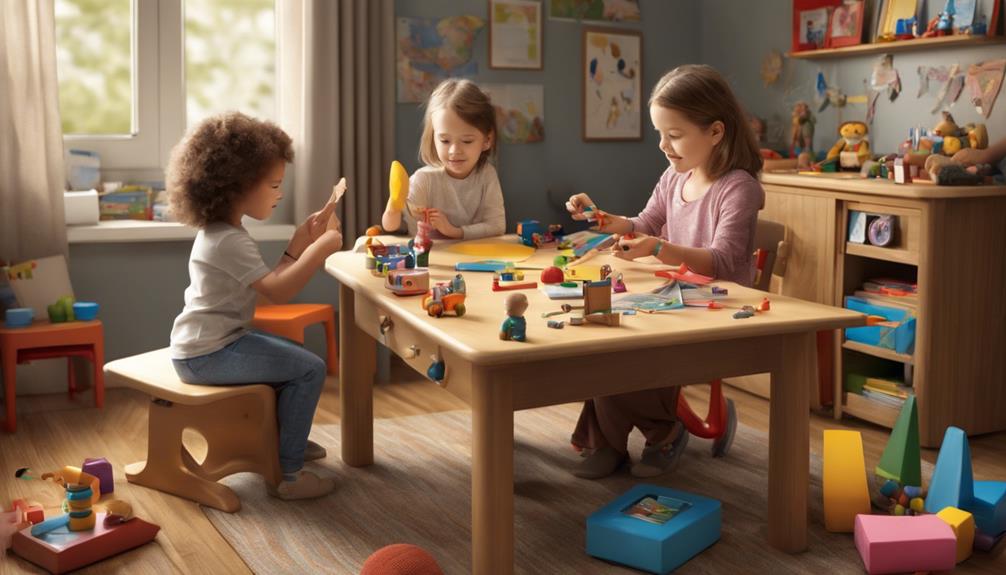Exploring the world of speech therapy assessments involves conducting a thorough evaluation of a person’s communication skills with precision.
From assessing language comprehension to dissecting the nuances of speech sounds, every aspect is scrutinized to paint a comprehensive picture.
Understanding the intricacies of this evaluation not only sheds light on communication challenges but also paves the way for tailored interventions that can transform how one navigates the world of verbal expression.
Intrigued to unravel the layers of this assessment and its impact on fostering effective communication?
Key Takeaways
- Speech therapy evaluations identify specific communication challenges for personalized treatment.
- Assessments highlight strengths and weaknesses crucial for setting targeted therapy goals.
- Evaluation process includes observing social communication skills, articulation, and language comprehension.
- Tailoring therapy plans based on assessments ensures effective intervention and progress monitoring.
Importance of Speech Therapy Evaluation
Understanding the significance of a speech therapy evaluation is essential in guiding individuals towards tailored treatment plans and measuring progress effectively. A speech evaluation serves as the foundation for initiating therapy by identifying specific speech and language diagnoses, highlighting both strengths and weaknesses crucial for treatment success. This assessment process isn't merely a formality but a critical step in ensuring that therapy goals are well-defined and align with the individual's needs. By seeking a speech evaluation, individuals open the door to targeted intervention that can address areas requiring improvement, ultimately paving the way for enhanced communication skills.
Furthermore, the speech therapy evaluation acts as a compass for the therapeutic journey, providing a roadmap for ongoing progress monitoring and goal reassessment. Through regular evaluations, typically recommended every 6 to 12 months, individuals can track their development, make informed adjustments to their treatment plan, and celebrate milestones achieved along the way. In essence, the evaluation sets the stage for a collaborative and personalized therapy experience, empowering individuals to reach their full potential in speech and language skills.
Initial Assessment Process

Embarking on the initial assessment process of a speech therapy evaluation involves gathering essential information about the individual's concerns and goals, setting the stage for evaluating communication skills through interactive activities and play. This phase is crucial in understanding the child's needs and tailoring the therapy accordingly. Here are key points to consider during the initial assessment process:
- Individualized Approach: Each child is unique, and the assessment process is personalized to address their specific communication challenges.
- Interactive Activities: Engaging the child in interactive tasks helps assess their speech and language abilities in a natural setting.
- Goal Setting: Collaboratively establishing goals with the child and family guides the therapy process towards meaningful outcomes.
- Baseline Data: Gathering baseline data during the assessment aids in tracking progress and adjusting therapy interventions as needed.
Through this comprehensive evaluation, the speech therapist gains valuable insights into the child's communication skills, laying the foundation for effective therapy planning and implementation.
Areas of Communication Assessed
During a speech therapy evaluation, we assess various aspects of communication such as receptive and expressive language, social language use, speech clarity, voice quality, and fluency.
By examining these key communication skills, we gain insight into how a child comprehends, expresses, and interacts through language.
This detailed evaluation process helps us understand a child's strengths and areas that may require targeted intervention.
Key Communication Skills
In assessing key communication skills during a speech therapy evaluation, various aspects including receptive language, expressive language, pragmatic language, articulation, voice, resonance, and fluency are carefully examined.
- Receptive Language: Understanding language.
- Expressive Language: Using language to communicate.
- Pragmatic Language: Social communication skills.
- Articulation: Clarity and accuracy of speech sounds.
These areas are crucial in understanding how an individual processes and expresses thoughts, ideas, and emotions.
Evaluation Process Details
We carefully assess a range of communication areas during the evaluation process to gain a comprehensive understanding of an individual's speech and language abilities. The SLP assesses the child's speech and language skills through various means to create a detailed profile for therapy planning. Here is a breakdown of the communication skills evaluated:
| Areas Assessed | Description | Purpose |
|---|---|---|
| Receptive Language | Understanding spoken language and following directions | Evaluate comprehension skills |
| Expressive Language | Using words and sentences to convey thoughts and ideas | Assess ability to express thoughts verbally |
| Pragmatic Language | Social language skills, including turn-taking, topic maintenance, and appropriate communication | Determine social communication abilities |
| Articulation | Pronunciation of sounds and clarity in speech | Identify speech sound production difficulties |
| Voice Quality & Fluency | Pitch, volume, and rate of speech, as well as smoothness in speech production | Evaluate vocal characteristics and speech fluency |
Speech Sounds Evaluation
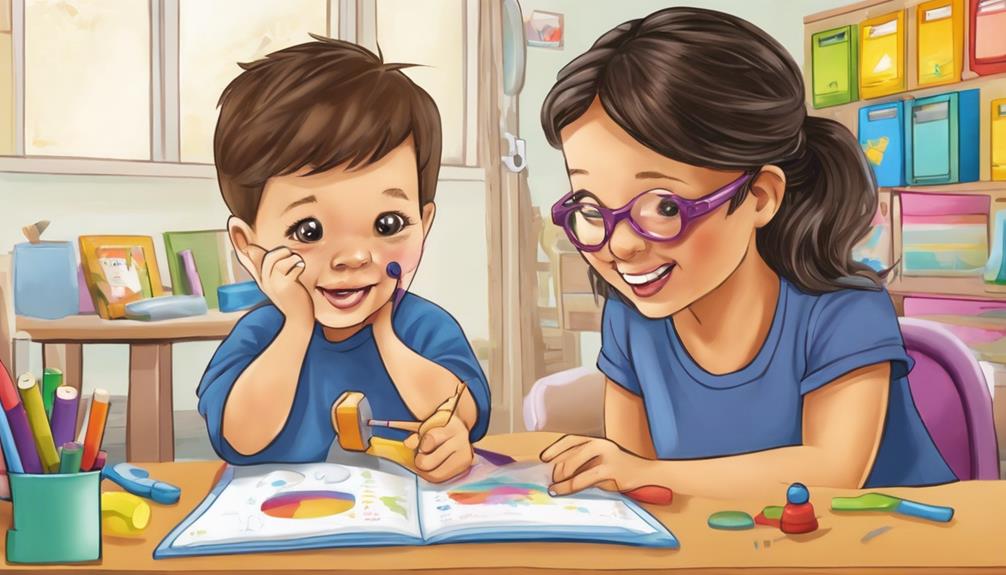
Embarking on a speech sounds evaluation allows us to delve into a child's ability to accurately produce and distinguish different speech sounds. During this assessment, we explore various aspects of their speech to pinpoint areas that may need support.
- Assessing Articulation: We observe how the child pronounces different sounds and words to identify any articulation difficulties.
- Phonemic Awareness Activities: Engaging in tasks that focus on recognizing and manipulating individual sounds in words helps us gauge their phonemic awareness.
- Error Identification: Through sound imitation and word repetition exercises, we can pinpoint specific speech sound errors.
- Informing Intervention Plans: The results of the evaluation provide crucial insights for creating tailored therapy goals and interventions to address any challenges discovered.
Language Comprehension Assessment

Upon evaluating a child's language comprehension during a speech therapy assessment, we focus on assessing their ability to understand spoken language effectively. This involves tasks such as following directions, answering questions, and identifying objects or pictures based on verbal instructions. Speech therapists carefully observe how the child comprehends different types of language and tailor the assessment according to their responses. By evaluating language comprehension, we can pinpoint any challenges the child may face in understanding and processing spoken information. The results obtained from this assessment are crucial as they guide us in developing specific therapy goals aimed at enhancing the child's ability to comprehend and respond to spoken language effectively.
| Language Comprehension Assessment |
|---|
| Tasks Included |
| Following directions |
| Answering questions |
| Identifying objects/pictures |
Social Communication Skills Evaluation
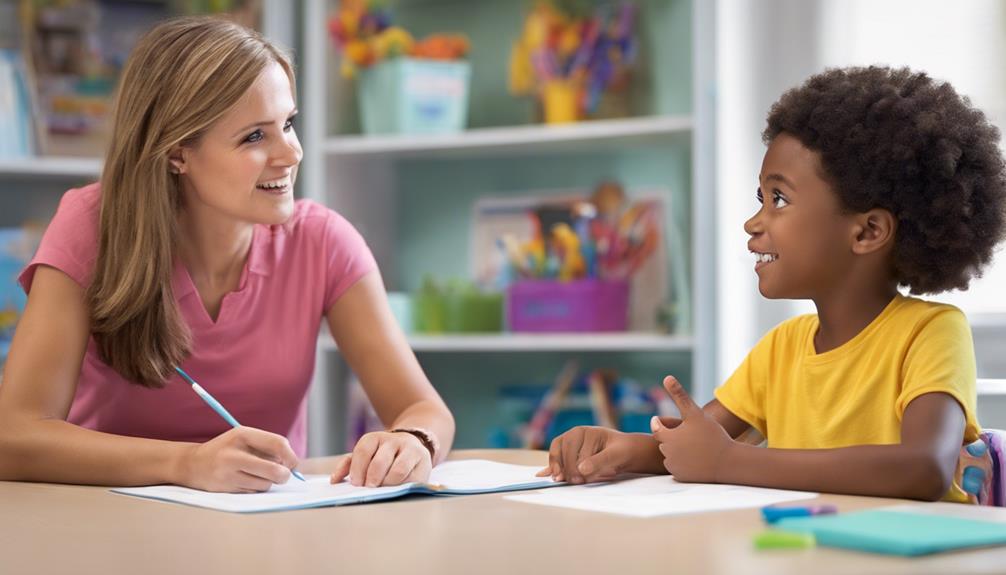
The assessment of social communication skills in speech therapy involves observing a child's interactions and communication abilities in diverse social contexts. During this evaluation, we focus on key aspects to understand the child's social communication skills effectively:
- Observing Social Interactions: We watch how the child engages with others, uses gestures, and maintains eye contact.
- Understanding Social Cues: We look for the child's ability to interpret social cues and respond appropriately.
- Role-Playing and Games: Through interactive activities, we assess the child's social communication in structured settings.
- Identifying Disorders: We search for signs of social communication disorders such as challenges with turn-taking or understanding emotions.
Identification of Strengths and Weaknesses

As we begin to explore the identification of strengths and weaknesses in a speech therapy evaluation, we employ various skill assessment methods to understand the child's communication abilities.
Through observations and interviews, we gather valuable insights into the child's speech and language challenges.
Setting communication goals based on these assessments is crucial for tailoring an effective treatment plan.
Skill Assessment Methods
Utilizing various assessment methods in speech therapy allows us to pinpoint strengths and weaknesses in different aspects of communication skills. During a speech and language evaluation, speech therapists employ a range of techniques to comprehensively assess a child's abilities. Here are some key points to consider:
- Receptive language
- Expressive language
- Pragmatic language
- Articulation
Observations and Interviews
During our observations and interviews, we gain valuable insights into a child's strengths and weaknesses in communication skills. By carefully observing the child in different settings and engaging in conversations with parents or caregivers, we can identify areas where they excel and where they may need additional support.
These observations help us understand how the child expresses themselves, comprehends language, and interacts socially. Through interviews, we gather crucial information about the child's communication abilities and any concerns that have been raised. This process allows us to pinpoint specific areas that require attention and tailor a treatment plan to address the child's unique needs effectively.
Ultimately, our goal is to support the child in developing strong communication skills and reaching their full potential.
Communication Goals Setting
In understanding a child's communication strengths and weaknesses, we lay the foundation for setting targeted goals during the speech therapy evaluation process.
- Identifying Strengths and Weaknesses: Assessing communication abilities through various tests and observations.
- Setting Communication Goals: Tailoring specific goals based on individual needs and areas of improvement.
- Developing a Tailored Treatment Plan: Using evaluation results to create a personalized plan addressing communication challenges.
- Establishing a Roadmap for Therapy: Goal setting to enhance overall communication skills and abilities.
Tailoring Treatment Plans
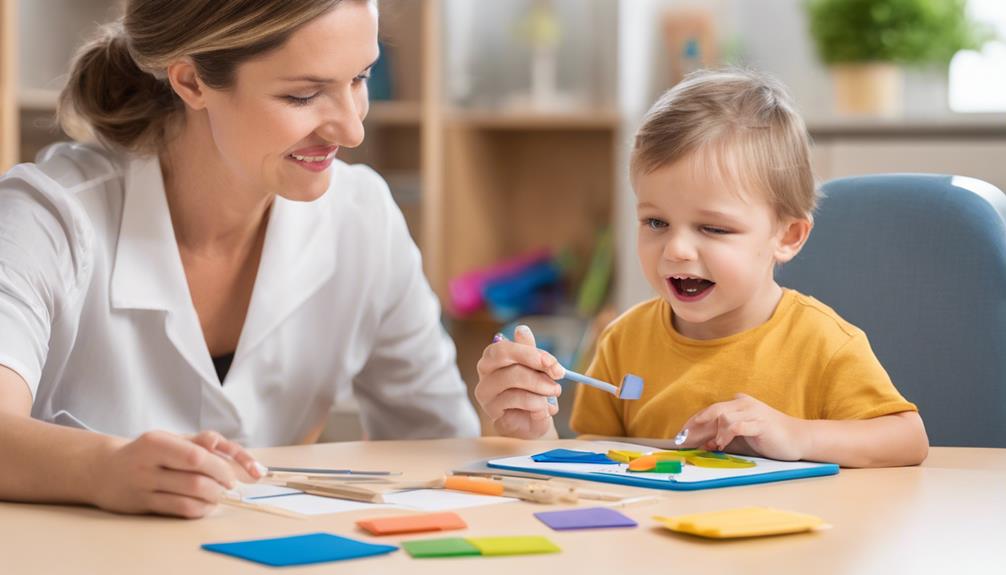
When tailoring treatment plans in speech therapy, we focus on addressing individual needs and goals to ensure effective interventions. Speech therapists customize therapy plans based on the evaluation results and the client's specific communication challenges. By tailoring interventions to target areas such as speech articulation, language comprehension, or social communication, we aim to provide comprehensive support for each individual. Here is a table outlining some key aspects of tailoring treatment plans in speech therapy:
| Aspect | Description |
|---|---|
| Individualized Approach | Plans are tailored to meet the unique needs and goals of each client. |
| Targeted Interventions | Interventions focus on addressing specific communication challenges. |
| Evolving Strategies | Therapy plans evolve over time to adapt to the client's progress. |
| Ongoing Assessment | Regular reassessment ensures that the treatment plan remains effective. |
Personalized Communication Challenges

As we explore the personalized communication challenges individuals face, we aim to identify their specific needs and tailor our therapy approach accordingly.
By understanding the unique difficulties in expressive and receptive language, we can develop targeted interventions to support effective communication skills.
This process allows us to create treatment goals that address individualized communication requirements with precision and care.
Identify Specific Needs
During the speech therapy evaluation process, we focus on identifying an individual's personalized communication challenges to create a tailored treatment plan. Understanding the child's current communication skills is crucial in developing an effective therapy approach.
Here are key aspects we consider:
- Expressive Language: Assessing how the individual expresses thoughts and ideas.
- Receptive Language: Evaluating the ability to understand and process language.
- Articulation: Identifying speech sound production difficulties.
- Pragmatic Language: Observing social language use and interactions.
Tailor Therapy Approach
In tailoring our therapy approach to address personalized communication challenges, we focus on understanding the unique speech and language difficulties of each individual.
As speech-language pathologists (SLPs), our goal is to create a customized treatment plan that caters to the specific needs of the individual, especially when a child needs speech therapy.
By analyzing assessment results, we can pinpoint areas of weakness and strengths in communication, allowing us to design interventions that are tailored to the individual's requirements.
This personalized approach ensures that each therapy session is targeted towards enhancing communication skills effectively.
Through individualized therapy plans, SLPs can provide the necessary support to help individuals overcome their communication challenges and achieve their communication goals.
Essential First Step

The first crucial step in embarking on the journey of speech therapy is understanding the child's communication needs through a comprehensive evaluation. This initial assessment sets the foundation for tailored therapy plans that address the child's specific challenges and strengths. Here are four key points to highlight the importance of this essential first step:
- Identifying Speech and Language Challenges: Speech therapy evaluations pinpoint any difficulties the child may have in communicating effectively.
- Assessing Strengths and Areas for Improvement: The evaluation provides valuable insights into the child's communication abilities, highlighting both strengths and areas needing development.
- Establishing a Baseline for Progress: By conducting evaluations, therapists can measure progress over time and set achievable treatment goals.
- Customizing Therapy Plans: Evaluations allow therapists to create personalized therapy plans that cater to the individual needs of each child.
Through these evaluations, we can better understand the child's unique communication profile and pave the way for targeted and effective interventions.
Improving Communication Abilities
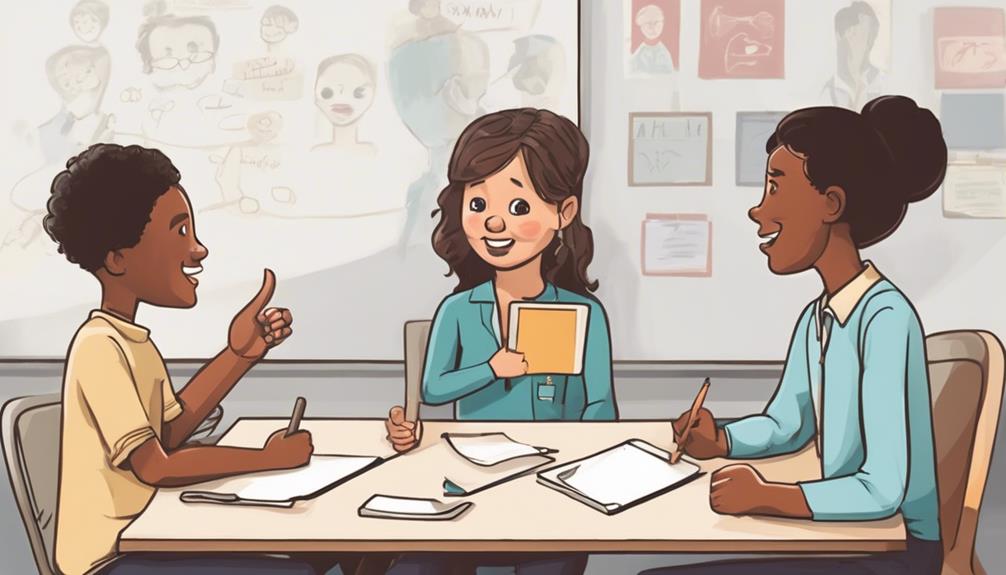
Understanding the results of a speech therapy evaluation is crucial for guiding interventions aimed at enhancing a child's communication abilities. The assessment process helps identify specific areas of need and strength, allowing for the development of tailored treatment plans that address the individual requirements of each child. By focusing on improving communication abilities through targeted interventions, speech therapists can help children overcome challenges and make significant progress in their language skills.
| Key Areas of Assessment | Purpose | Outcome |
|---|---|---|
| Expressive Language | Evaluate verbal expression | Identify difficulties in speech |
| Receptive Language | Assess comprehension | Pinpoint understanding gaps |
| Articulation | Review speech sound production | Address pronunciation issues |
| Fluency | Examine speech flow | Identify stuttering patterns |
Through a combination of standardized testing and informal assessments, speech therapists gather comprehensive information to create effective treatment plans that promote growth in communication abilities. By focusing on these key areas of assessment, tailored interventions can be implemented to help children improve their language skills and enhance their overall communication capabilities.
Detailed Components of Evaluation
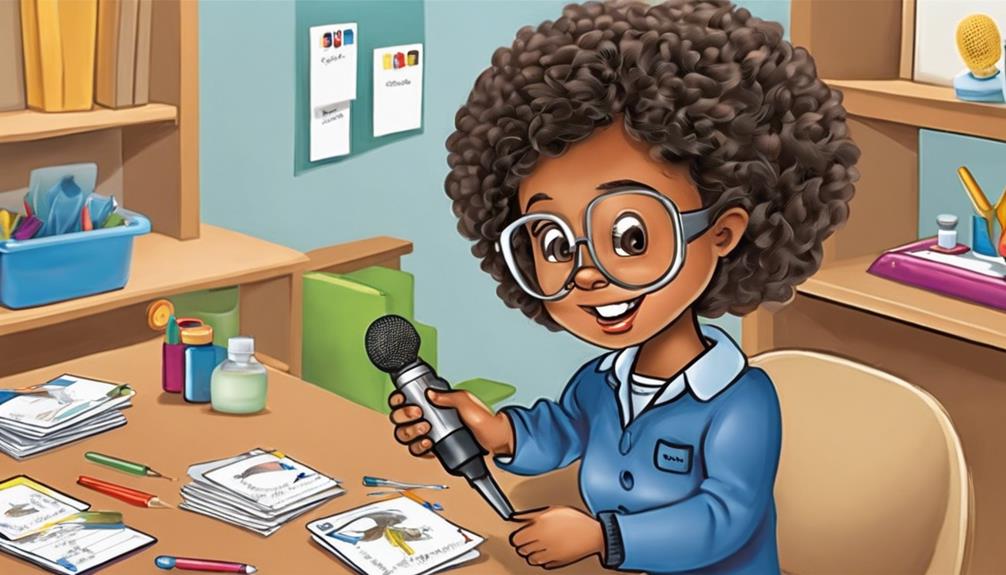
Discussing the detailed components of evaluation involves exploring various aspects of a child's speech and language skills through a combination of assessments and observations. When conducting a Speech Therapy Evaluation, we focus on the child's communication abilities to determine their specific needs and develop appropriate strategies to implement. Here are key components of this evaluation:
- Reason for Referral Discussion: Understanding concerns that led to the evaluation.
- Observations and Assessments: Utilizing play-based and behavioral assessments.
- Standardized Testing: Providing in-depth insights into speech and language skills.
- Informal Assessments: Complementing formal evaluation methods for a comprehensive view.
Frequently Asked Questions
How Do You Prepare for a Speech Evaluation?
When getting ready for a speech evaluation, we make sure to bring all necessary paperwork and any previous test reports. It's important to keep electronic devices away to keep the child engaged. We pack essentials like snacks, water, toys, and comfort items in the diaper bag. Sending in paperwork beforehand helps streamline the process.
During the evaluation, expect a relaxed atmosphere with a parent interview, child observation, and play with toys.
What Are Areas That Are Typically Assessed During a Speech and Language Evaluation?
When we evaluate speech and language skills, we typically assess various areas. These include:
- Receptive language skills for understanding
- Expressive language skills for expressing thoughts
- Pragmatic language for social communication
- Articulation for speech sounds
- Voice/resonance for speech quality
Each aspect plays a crucial role in communication assessment and therapy planning. Understanding these facets helps us tailor interventions to meet individual needs effectively.
What Is the Difference Between a Speech Screening and a Speech Evaluation?
When comparing a speech screening to a speech evaluation, it's crucial to understand the distinction. Screenings are brief assessments to spot potential concerns, while evaluations dig deeper into diagnosing specific communication disorders.
Screenings help decide if a full evaluation is needed, whereas evaluations provide detailed insights into speech and language abilities. Knowing this difference guides us in determining the appropriate level of assessment required to address speech and language challenges effectively.
What Is Included in a Comprehensive Speech Evaluation?
When we talk about what's included in a comprehensive speech evaluation, it's like peeling back layers to reveal a full picture of someone's communication skills.
This evaluation dives deep into receptive, expressive, and pragmatic language abilities, along with articulation, voice, resonance, and fluency.
Through this process, we gather essential information to determine the need for speech therapy, set treatment goals, and lay the foundation for enhancing speech and language skills.
Conclusion
In conclusion, a speech therapy evaluation is like a communication superpower booster, unlocking hidden talents and untapped potential in individuals.
It's the ultimate guide to unleashing the power of words and enhancing the ability to connect with others on a whole new level.
So, don't underestimate the impact of this evaluation – it's the key to transforming communication skills and opening doors to endless possibilities.

